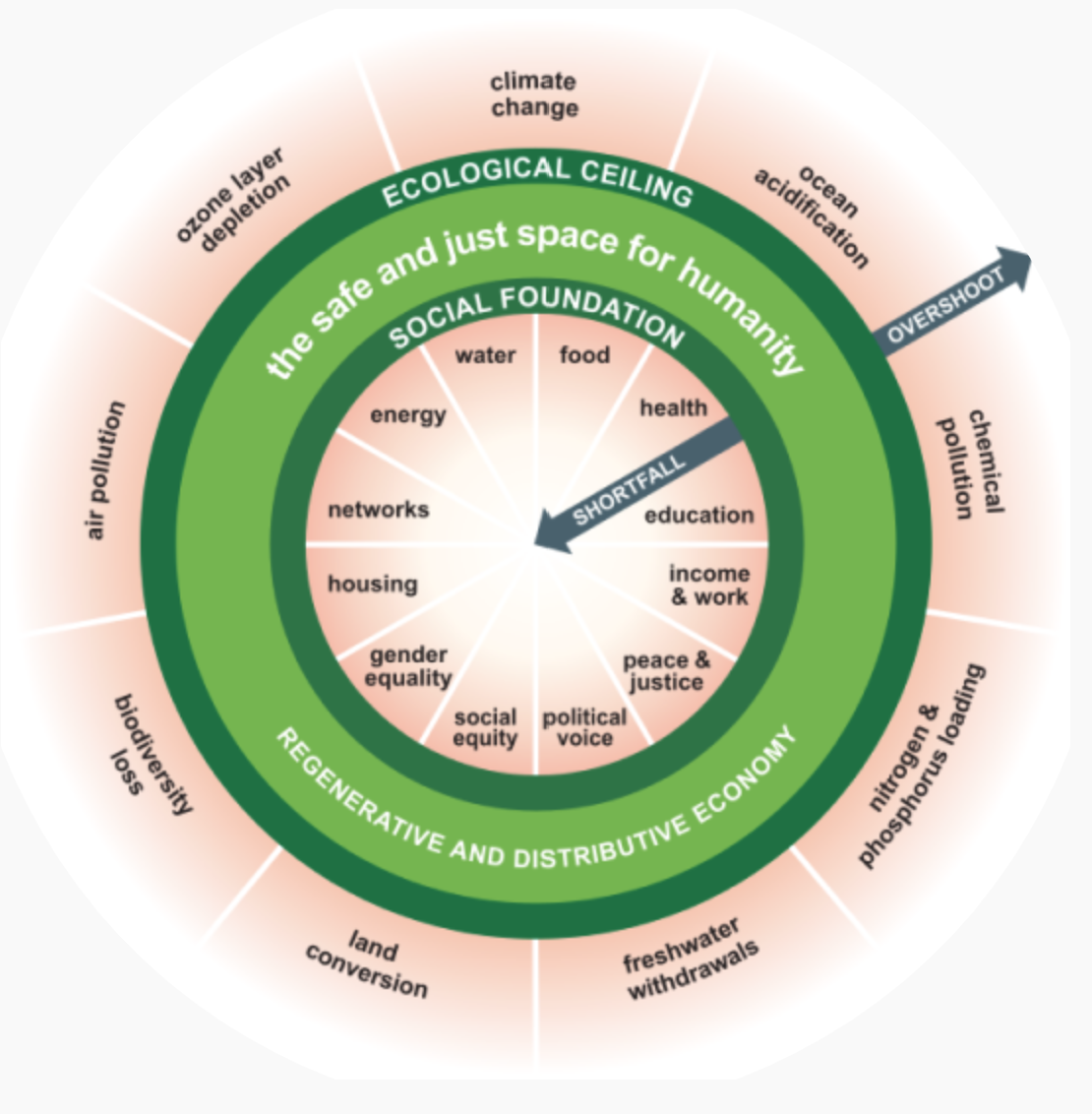thinking tool.
The one about meeting everyone’s needs within the planet’s limits.
Wellbeing Economies and Doughnut Economics
Credit: Kate Raworth; Amartya Sen and Martha Nussbaum; Tim Jackson.
Summary:
A wellbeing economy is an economic system that puts people’s quality of life and the health of the planet at the heart of decision-making — rather than focusing narrowly on increasing GDP (Gross Domestic Product). Instead of asking “Is the economy growing?” the key question becomes “Are people and nature thriving?” So, it measures success through things like: health and happiness; equality and fairness; sustainable use of natural resources; and community connection and trust.
Doughnut economics is a visual framework (see image below) created by Kate Raworth, an Oxford economist, to guide economies so they meet everyone’s needs within the planet’s limits. The “doughnut” diagram:
- The inner ring is the social foundation — the minimum everyone needs to live well (food, housing, education, equality, health care, political voice).
- The outer ring is the ecological ceiling — the Earth’s environmental limits (climate stability, clean water, biodiversity, ozone layer, etc).
Between the two rings — the doughnut itself — is the “safe and just space for humanity.” The goal: leave no one falling short of life’s essentials (don’t slip inside the hole) and don’t overshoot Earth’s limits (don’t spill outside the doughnut).
Real world application:
Doughnut economics flips traditional economic on its head:
- It says economies should be regenerative and distributive by design.
- It challenges the idea that endless GDP growth is compatible with a finite planet.
- It promotes local, circular economies, renewable energy, fair wages, redesigning cities for livability.
This matters because it gives governments, businesses, and communities:
- A reason to break free from the “grow GDP at all costs” mindset.
- A framework to tackle poverty, climate change, inequality, and mental health as one system — not separate problems.
- New ways to design budgets, policies, and local projects that build a fairer, healthier future.


